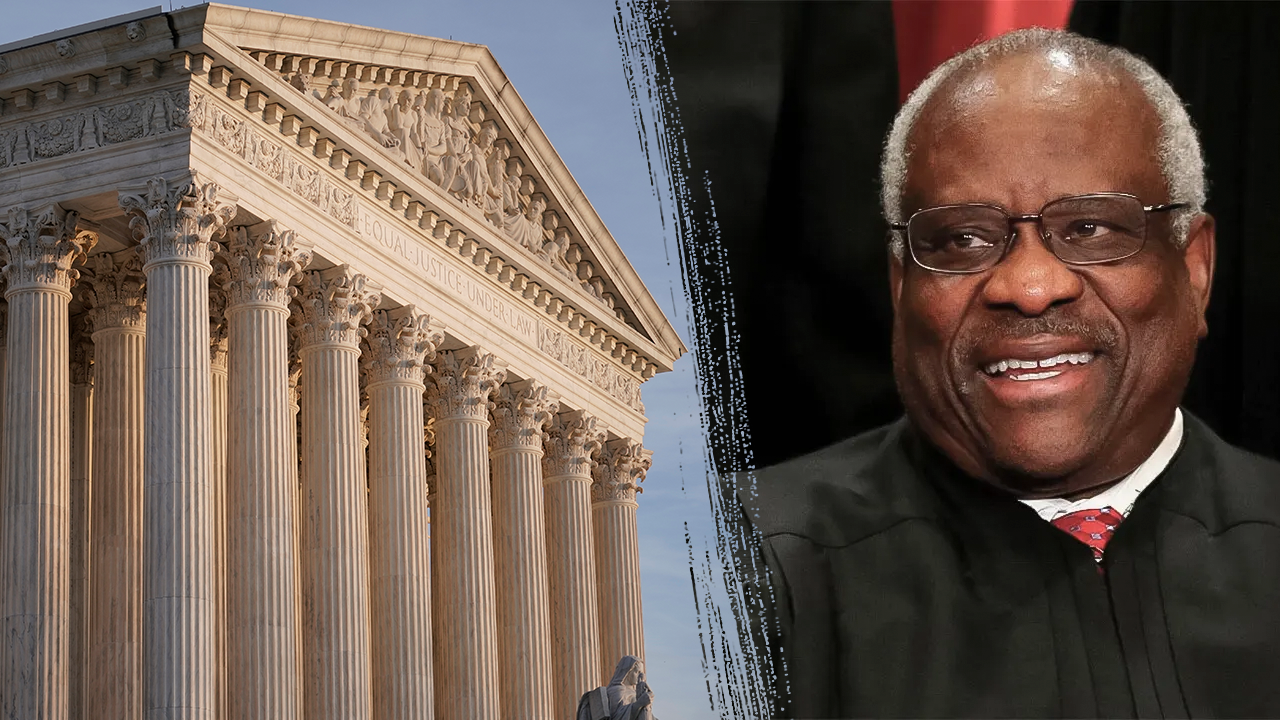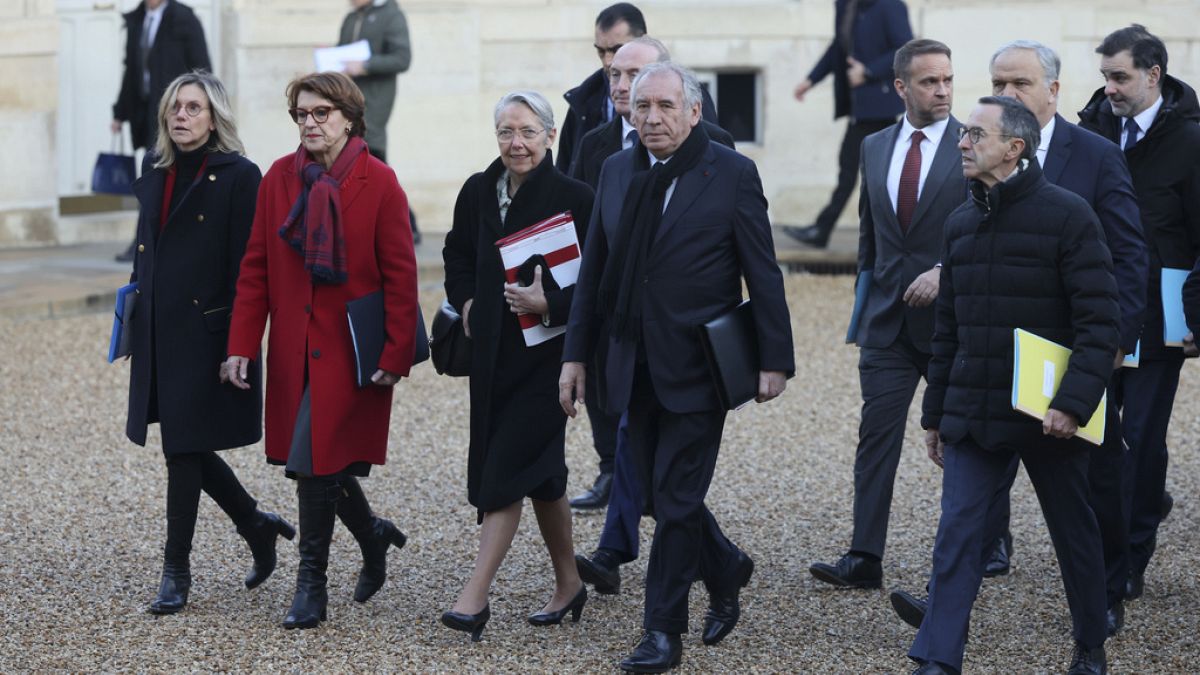Washington, D.C
Family opts to keep bodycam footage private after DC police shooting

Family of DC shooting victim requests bodycam footage be withheld
D.C. authorities will not release the body camera footage of the two officers involved in the fatal shooting of a Violence Interrupter over the weekend, as the family of Justin Robinson has requested that the video remain private. FOX 5’s Nana-Sentuo Bonsu has the story.
WASHINGTON – D.C. authorities will not release the body camera footage of the two officers involved in the fatal shooting of a Violence Interrupter over the weekend, as the family of Justin Robinson has requested that the video remain private.
Under D.C. law, Mayor Muriel Bowser has five days to release body camera footage unless the victim’s family objects.
Robinson’s family has chosen to keep the footage from public view, according to officials.
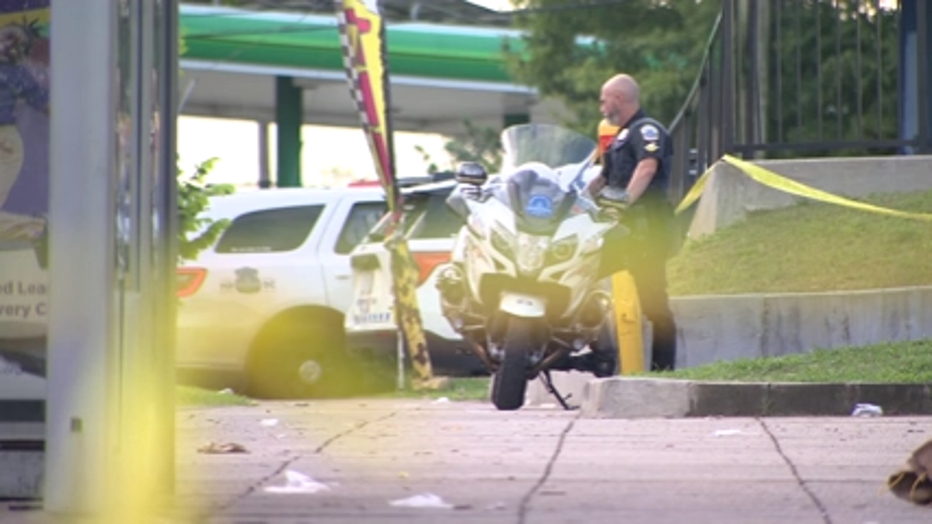
The decision comes just after community members called for the release of the footage during protests demanding justice for Robinson, who was shot and killed by police in Southeast D.C. on Sunday morning.
According to the Metropolitan Police Department, officers responded to a McDonald’s on the 2500 block of Marion Barry Avenue Southeast around 5:30 a.m. because of a reported crash.
When officers arrived, they found Robinson, 26, unresponsive in his car at the drive-thru, with a gun visible in his lap.
Police called for backup and said that as Robinson began to wake up, they ordered him to put down the weapon. MPD claims Robinson then tried to grab an officer’s gun, prompting two officers to fire their weapons, killing him at the scene.
The officers involved, Vasco Mateus and Brian Gilchrist, have been placed on administrative leave.
Mateus has served with MPD for four years, while Gilchrist has been with the department for two and a half years. Both are assigned to the 7th District.
Jawanna Hardy, founder of Guns Down Friday, initially called for the release of the footage but expressed understanding of the family’s decision to keep it private.
“To see your loved one, no matter what the situation is, on social media or TV, to have to relive that every day—it’s traumatizing,” Hardy said.
In a letter to Council Member Brooke Pinto, chair of the Judiciary Committee, Deputy Mayor for Public Safety and Justice Lindsay Appiah confirmed the officers’ names and their current administrative status.
Hardy emphasized the community’s frustration and desire for fairness, stating, “Anytime police are involved in a community shooting, there’s always questions. Because who has the right to take a life?”
DC City Council does have the ability to request access to the footage for oversight purposes, though it remains unclear if they will pursue that option.

Washington, D.C
Heightened security, road closures in DC for Jan. 6 vote counting, Carter funeral
Expect to see more police officers and road closures in Washington, D.C., over the next few days as the city prepares for the certification of the presidential election at the Capitol and the state funeral for former President Jimmy Carter.
“I want to be very clear that we will not tolerate any violence, rioting, destruction of property or any behavior that threatens the safety and security of our city,” Metropolitan Police Department Chief Pamela Smith said at a news conference D.C. authorities held Friday.
Fencing is up around the U.S. Capitol and will remain in place until the inauguration on Jan. 20.
While officials say there are no credible threats, security will be high next week given the deadly terrorist attack in New Orleans and the car explosion in Las Vegas.
Road closures around the Capitol building are in effect Friday night through Monday for the counting and certification of electoral votes taking place Monday.
Closures will then expand down Pennsylvania Avenue on Tuesday for the motorcade carrying Carter from Join Base Andrews to the U.S Navy Memorial. Then, a public procession will take Carter from the memorial to the Capitol Tuesday afternoon.
Drivers should expect widespread road closures on Thursday for Carter’s funeral, especially surrounding the Washington National Cathedral in Northwest.
Security will also be enhanced above the city.
“I advise everyone that the Secret Service will use drones as part of our comprehensive security plan. Do not be alarmed if you see these assets during the upcoming events or training in the days ahead,” said William McCool, the special agent in charge for the U.S. Secret Service Washington Field Office.
While authorities said there’s no known threat, they are concerned about the potential for a lone wolf attack. A suspect who planted two pipe bombs near the Capitol on Jan. 6, 2021. That person was never caught.
“We’re absolutely concerned that person is still on the loose and at large. Those were two viable devices left, not only outside of the Democratic and Republican National Committee headquarters, but in a neighborhood where people work and live and we have had a consistent effort alongside our partners to try to identify that person. That is going to remain a threat until we can identify that person,” said David Sundberg, assistant director in charge for the FBI Washington Field Office.
Road Closures
The following roads will close at about 8 p.m. on Friday:
- First Street between Constitution Avenue, NW, and Independence Avenue, SW
- Pennsylvania Avenue between 3rd Street, NW, and First Street, NW
- Maryland Avenue between 3rd Street, SW, and First Street, SW
These roads are closed starting 7 a.m. Monday:
- First Street between Constitution Avenue, NE, and Independence Avenue, SE
- East Capitol Street between First Street and 2nd Street
- Constitution Avenue between Louisiana Avenue, NW, and 2nd Street, NE
- Independence Avenue between Washington Avenue, SW, and 2nd Street, SE
- D Street between First Street, NE, and 2nd Street, NE
- Maryland Avenue between First Street, NE, and Constitution Avenue, NE
- First Street between Louisiana Avenue, NW, and Constitution Avenue, NW
The following streets will be closed to vehicle traffic from 7 p.m. Monday through Wednesday at 4:30 a.m.:
- 13th Street from E Street to Pennsylvania Avenue, NW
- 12th Street from E Street to Independence Avenue, SW
- 11th Street from E Street to Constitution Avenue, NW
- 10th Street from E Street to Constitution Avenue, NW
- 9th Street from E Street to Constitution Avenue, NW
- 8th Street from E Street to D Street, NW
- 7th Street from E Street, NW to Independence Avenue, SW
- 6th Street from E Street to Constitution Avenue, NW
- 5th Street from E Street to D Street, NW
- 4th Street from D Street, NW to Independence Avenue, SW
- 3rd Street from E Street, NW to Independence Avenue, SW
- Northbound 3rd Street Tunnel Exit 9 toward US Capitol
- 2nd Street from C Street to Constitution Avenue, NW
- 1st Street from E Street, NW to Maryland Avenue, SW
- New Jersey Avenue from E Street to Constitution Avenue, NW
- Louisiana Avenue from Columbus Circle, NE to Constitution Avenue, NW
- Delaware Avenue from Columbus Circle to Constitution Avenue, NE
- North Capitol Street from E Street to D Street, NW
- 1st Street from Columbus Circle, NE to Independence Avenue, SE
- D Street from 9th Street NW to 2nd Street, NE
- Indiana Avenue from 7th Street to 3rd Street, NW
- C Street from 6th Street to New Jersey Avenue, NW
- Pennsylvania Avenue from 14th Street to 1st Street, NW
- Constitution Avenue from 14th Street NW to 2nd Street, NE
- Madison Drive from 14th Street to 3rd Street, NW
- Jefferson Drive from 14th Street to 3rd Street, SW
- Maryland Avenue from Independence Avenue to 1st Street, SW
The following streets will close on Tuesday from 7 a.m. to 3 p.m.:
- Independence Avenue from Washington Avenue, SW to 2nd Street, SE
The following streets will close on Tuesday from 1 to 3 p.m.:
- 8th Street from F Street to E Street, NW
- F Street from 9th Street to 7th Street, NW
- E Street 10th Street to 6th Street, NW
The following street will be closed intermediately on Thursday from 4 a.m. to 3 p.m.:
- Calvert Street from 29th Street to Connecticut Avenue, NW
The following streets will be closed on Thursday from 12:01 a.m. to 3 p.m.:
- Garfield Street from Massachusetts Avenue, NW to 34th Street, NW
- 34th Street from Woodley Road to Garfield Street, NW
- Woodley Road from Wisconsin Avenue to 34th Street, NW
- Wisconsin Avenue from Lowell Street to Massachusetts Avenue, NW
- Cathedral Avenue from Massachusetts Avenue to Wisconsin Avenue, NW
The following streets will be open for local traffic only on Thursday from 12:01 a.m. to 3 p.m.:
- Garfield Street from 34th Street to 32nd Street, NW
- Woodland Drive from Garfield Street to 32nd Street, NW
- 33rd Place from Cathedral Avenue to Garfield Street, NW
- Cleveland Avenue from 34th Street to 32nd Street, NW
- Cathedral Avenue from 34th Street to 32nd Street, NW
- Klingle Road from 34th Street to 32nd Street, NW
- Woodley Road from 33th Street to 32nd Street, NW
- 34th Street from Macomb Street to Woodley Road, NW
- 35th Street from Lowell Street to Woodley Road, NW
- 36th Street from Lowell Street to Woodley Road, NW
- Wisconsin Avenue from Macomb Street, NW to Lowell Street, NW
- Woodley Road from 38th Street to Wisconsin Avenue, NW
- 36th Street from Garfield Street to Massachusetts Avenue, NW
- 35th Street from Garfield Street to Fulton Street, NW
- 34th Place from Garfield Street to Fulton Street, NW
- 34th Street from Garfield Street to Fulton Street, NW
Parking restrictions
The following streets will be posted as Emergency No Parking from Saturday at 12:01 a.m. through Wednesday at 4:30 a.m.:
- 13th Street from E Street to Pennsylvania Avenue, NW
- 12th Street from E Street to Madison Drive, NW
- 11th Street from E Street to Pennsylvania Avenue, NW
- 10th Street from E Street to Constitution Avenue, NW
- 9th Street from E Street to Constitution Avenue, NW
- 8th Street from F Street to D Street, NW
- 7th Street from E Street, NW to Independence Avenue, SW
- 6th Street from E Street to Constitution Avenue, NW
- 5th Street from E Street to D Street, NW
- 4th Street from E Street, NW to Independence Avenue, SW
- 3rd Street from E Street, NW to Independence Avenue, SW
- 2nd Street from C Street to Constitution Avenue, NW
- 1st Street from E Street to Pennsylvania Avenue, NW
- New Jersey Avenue from E Street to Constitution Avenue, NW
- Louisiana Avenue from Columbus Circle, NE to Constitution Avenue, NW
- Delaware Avenue from Columbus Circle to Constitution Avenue, NE
- North Capitol Street from E Street to D Street, NW
- 1st Street from Columbus Circle, NE to Independence Avenue, SE
- F Street from 9th Street to 7th Street, NW
- E Street 10th Street, NW 6th Street, NW
- D Street from 9th Street NW to 1st Street, NE
- Indiana Avenue from 7th Street to 3rd Street, NW
- C Street from 6th Street to New Jersey Avenue, NW
- Pennsylvania Avenue from 14th Street to 1st Street, NW
- Constitution Avenue from 14th Street NW to 2nd Street, NE
- Madison Drive from 14th Street to 3rd Street, NW
- Jefferson Drive from 14th Street to 3rd Street, SW
- Maryland Avenue from Independence Avenue to 1st Street, SW
- Independence Avenue from Washington Avenue, SW to 2nd Street, SE
The following streets will be posted as Emergency No Parking on Thursday from 4 a.m. to 3 p.m.:
- Calvert Street from 28th Street to Shoreham Drive, NW
Washington, D.C
DC officials brace for high-profile events for Congress vote, Trump inauguration
Pickup truck attack in New Orleans kills at least 10
At least 10 people were killed and more than 30 injured when a pickup truck barreled into crowded Bourbon Street on New Year’s Day.
WASHINGTON – Authorities in the nation’s capital are bracing for a series of high-profile events starting Friday, implementing tighter security after the fatal vehicle attack in New Orleans this week.
The events include Congress reconvening on Friday, lawmakers counting Electoral College votes on Monday, the late President Jimmy Carter lying in state at the Capitol Tuesday through Thursday and President-elect Donald Trump’s inauguration on Jan. 20.
“We have already been ramping up security, as planned, ahead of a busy month at the U.S. Capitol,” the U.S. Capitol Police said in a statement Thursday.
The Metropolitan Police Department heightened its security posture across the city “out of an abundance of caution” after the New Orleans attack, although there is no known threat to the city, according to Paris Lewbel, the department’s deputy director of communications.
“While we do not discuss specifics regarding operations, tactics, or staffing, the community will notice an increased police presence throughout the city,” Lewbel said.
D.C. Mayor Muriel Bowser scheduled a news conference for 11 a.m. Friday to discuss capital security.
The U.S. Department of Homeland Security declared the counting of Electoral College votes on Monday as a “national security event,” based on a request from Bowser, after a riot during that event in 2021 led to charges against more than 1,500 people. The inauguration is also considered a national security event. City officials said in September that they had been planning for it for months.
The designation calls for significant resources in a coordinated security plan by federal, state and local officials.
Metropolitan Police Chief Pamela Smith said at a news conference with the mayor on Nov. 12 that the city hoped to have 4,000 police officers from other agencies to help provide security for the inauguration. She said city officials would meet with federal counterparts to share intelligence for the election certification on Monday and for the inauguration later this month.
In a Maryland suburb northwest of D.C., Montgomery County police said their department has a mutual aid agreement with U.S. Capitol Police and D.C. Metropolitan Police and “will provide assistance when asked.”
The FBI is investigating the New Orleans incident as “an act of terrorism” but officials said Thursday the driver, who was shot and killed by local police, apparently acted alone. Authorities have not found links between that attack and the explosion of a truck outside the Trump International Hotel in Las Vegas on Wednesday.
Signs of tighter security for the upcoming events were apparent after the installation of chain-link fencing around the Capitol. Fencing has routinely been placed around the historic building following the riot on Jan. 6, 2021, which led to a temporary halt in Congress counting Electoral College votes. Security fencing is traditionally erected for the inauguration, with the Metropolitan Police Department taking the lead.
“While there is no known threat to the District of Columbia, out of an abundance of caution, MPD has heightened its security posture across the city in light of recent events,” Lewbel said. “As the nation’s capital, we maintain a heightened level of security at all times to ensure the safety of our residents, businesses, and visitors.”
Washington, D.C
FBI releases video showing January 2021 pipe bomb suspect planting device outside DNC, RNC offices in DC
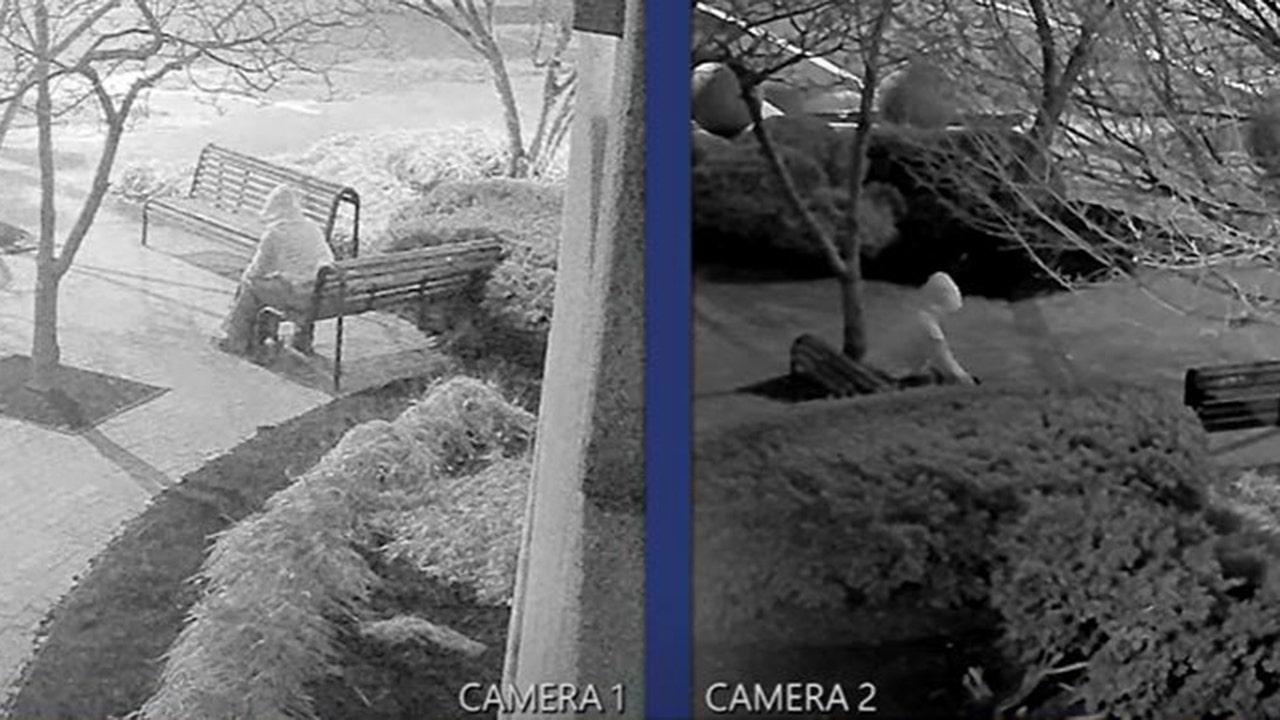
The FBI on Thursday released a new video allegedly showing the Jan. 5, 2021 suspect who planted pipe bombs outside the Democratic National Committee and Republican National Committee offices in Washington, D.C.
Along with the video, the FBI also revealed that the suspect is believed to be about 5-foot, 7-inches tall in an effort to elicit new tips from the public ahead of the fourth anniversary of the crime.
The FBI noted that a $500,000 reward is still available for tips that lead to an arrest.
The attempted attack occurred on the eve of the Jan. 6, 2021, attack on the U.S. Capitol, but there is no clear link between the two events.
FBI CONTINUES TO SEARCH FOR JAN 6 PIPE BOMB SUSPECT 3 YEARS AFTER US CAPITOL RIOT, OFFERS $500K REWARD
The FBI on Thursday released a new video allegedly showing the Jan. 5, 2021 suspect who planted a pipe bomb outside the Democratic National Committee and Republican National Committee offices in Washington, D.C. (FBI)
“Without being able to confirm the suspect’s identity, it is very hard to definitively establish motive,” David Sundberg, assistant director in charge of the FBI’s Washington field office, told The Associated Press. “Therefore, it would be difficult for us to state that there is a link, although we can’t state there is not one.”
Investigators aren’t even sure if the suspect is a man or a woman.
The suspect was wearing a grey hoodie, face mask, black gloves and Nike Air Max Speed Turf shoes, the FBI said, adding that fewer than 25,000 pairs of the shoes were sold between August 2018 and the time of the attack.
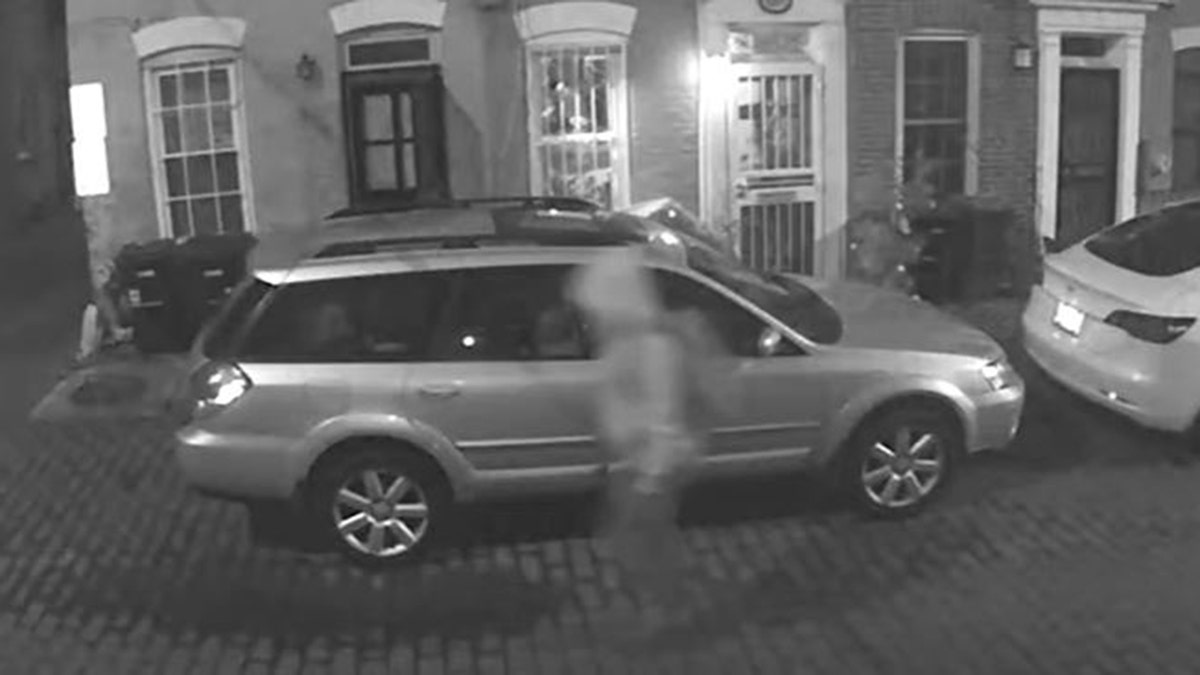
Last surveillance footage of the suspect leaving the scene after planting the second bomb. (FBI)
“Based on attire, those are probably the most remarkable or distinctive feature when it comes to clothing the suspect wore,” Sundberg said. “We’re hoping that somebody might recognize that.”
The FBI has assessed over 600 tips, reviewed about 39,000 video files and conducted more than 1,000 interviews over the past four years.
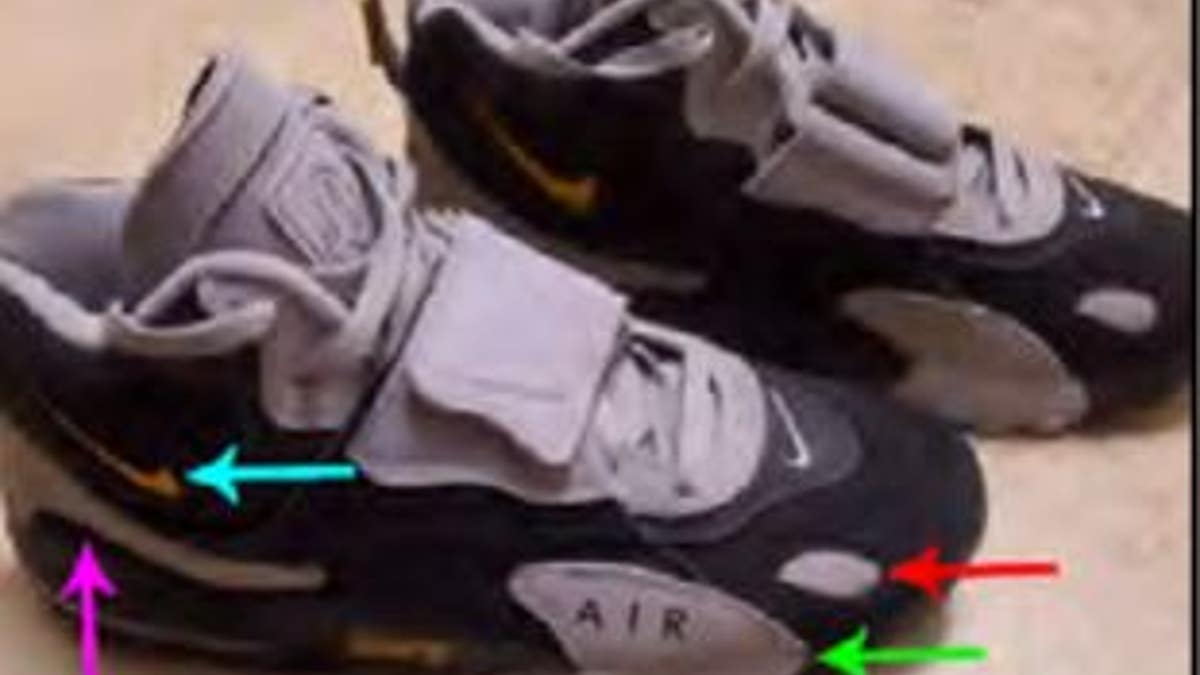
Nike Air Max Speed Turf shoes like the ones worn by the suspect. (FBI)
The new video shows the suspect placing the first bomb near a bench outside the Democratic National Committee building just before 8 p.m.
BOMB-MAKING MATERIALS FOUND AT NEW ORLEANS AIRBNB POTENTIALLY TIED TO BOURBAN STREET TERRORIST: REPORT
The suspect then placed the second bomb in an alley behind the Republican National Committee building at around 8:16 p.m. and was last seen in surveillance footage two minutes later walking past a row of D.C. houses wearing a backpack that investigators believe they used to transport the pipe bombs.
“We still believe there is someone out there who has information they may not have realized was significant until now,” the narrator of the FBI video said. “We’re asking you to come forward and share that information with the FBI.”
No one was hurt in the attempted attack and the bombs were rendered safe, but the FBI said it could have been deadly.
CLICK HERE TO GET THE FOX NEWS APP
Both Vice President Kamala Harris and then-House Speaker Nancy Pelosi were near the DNC office before the first bomb was found on the afternoon of Jan. 6 and deactivated.
The Associated Press contributed to this report.
-

 Business1 week ago
Business1 week agoOn a quest for global domination, Chinese EV makers are upending Thailand's auto industry
-

 Health6 days ago
Health6 days agoNew Year life lessons from country star: 'Never forget where you came from'
-
/cdn.vox-cdn.com/uploads/chorus_asset/file/24982514/Quest_3_dock.jpg)
/cdn.vox-cdn.com/uploads/chorus_asset/file/24982514/Quest_3_dock.jpg) Technology6 days ago
Technology6 days agoMeta’s ‘software update issue’ has been breaking Quest headsets for weeks
-

 World1 week ago
World1 week agoPassenger plane crashes in Kazakhstan: Emergencies ministry
-

 Politics1 week ago
Politics1 week agoIt's official: Biden signs new law, designates bald eagle as 'national bird'
-

 Business3 days ago
Business3 days agoThese are the top 7 issues facing the struggling restaurant industry in 2025
-

 Politics1 week ago
Politics1 week ago'Politics is bad for business.' Why Disney's Bob Iger is trying to avoid hot buttons
-

 Culture3 days ago
Culture3 days agoThe 25 worst losses in college football history, including Baylor’s 2024 entry at Colorado
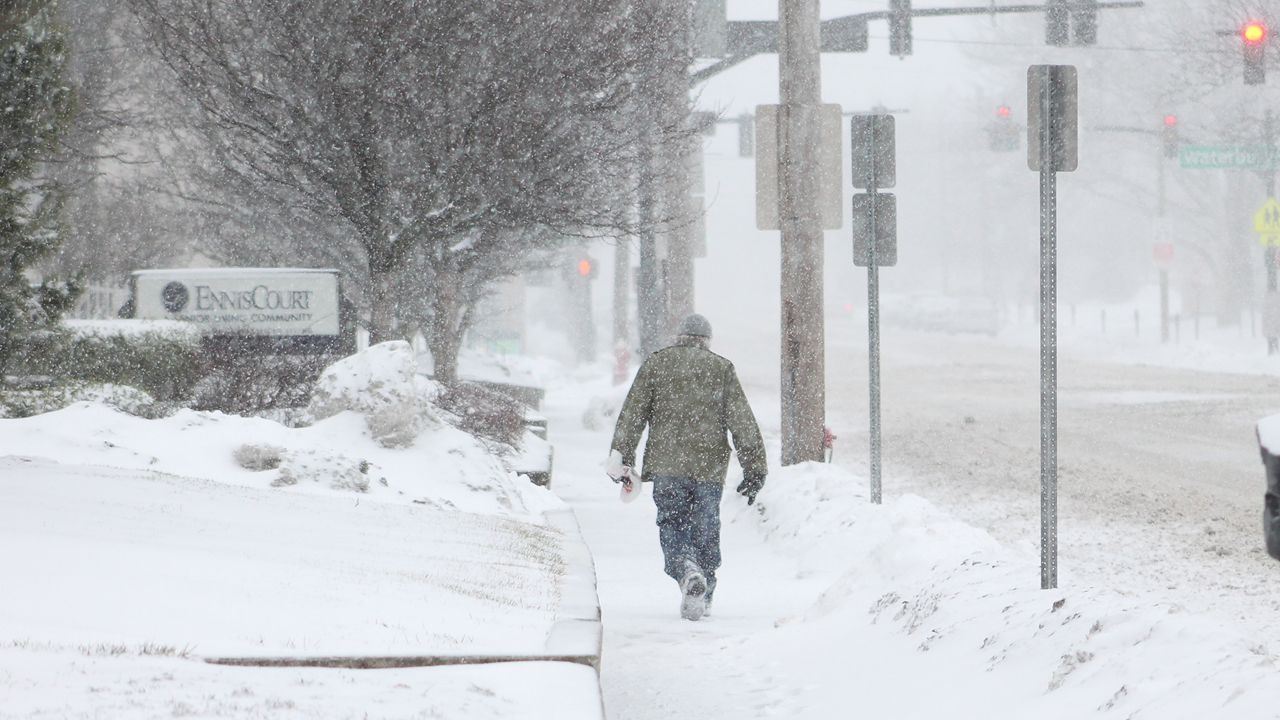
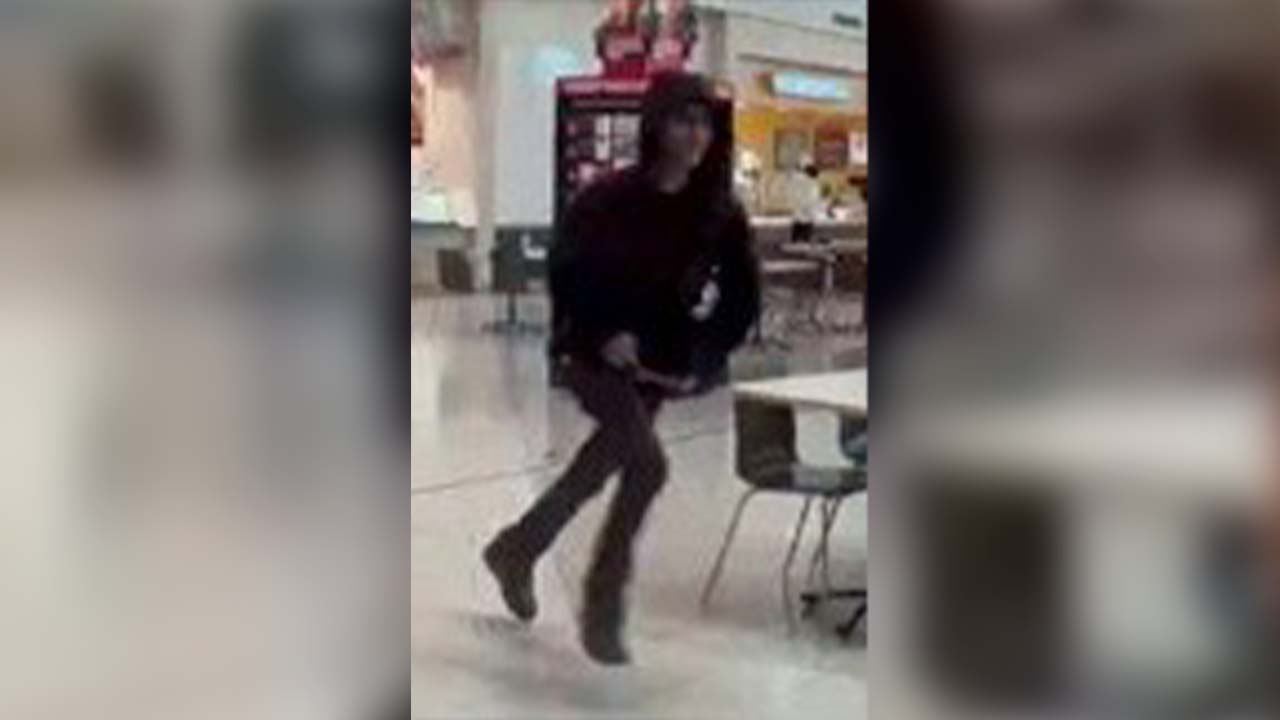

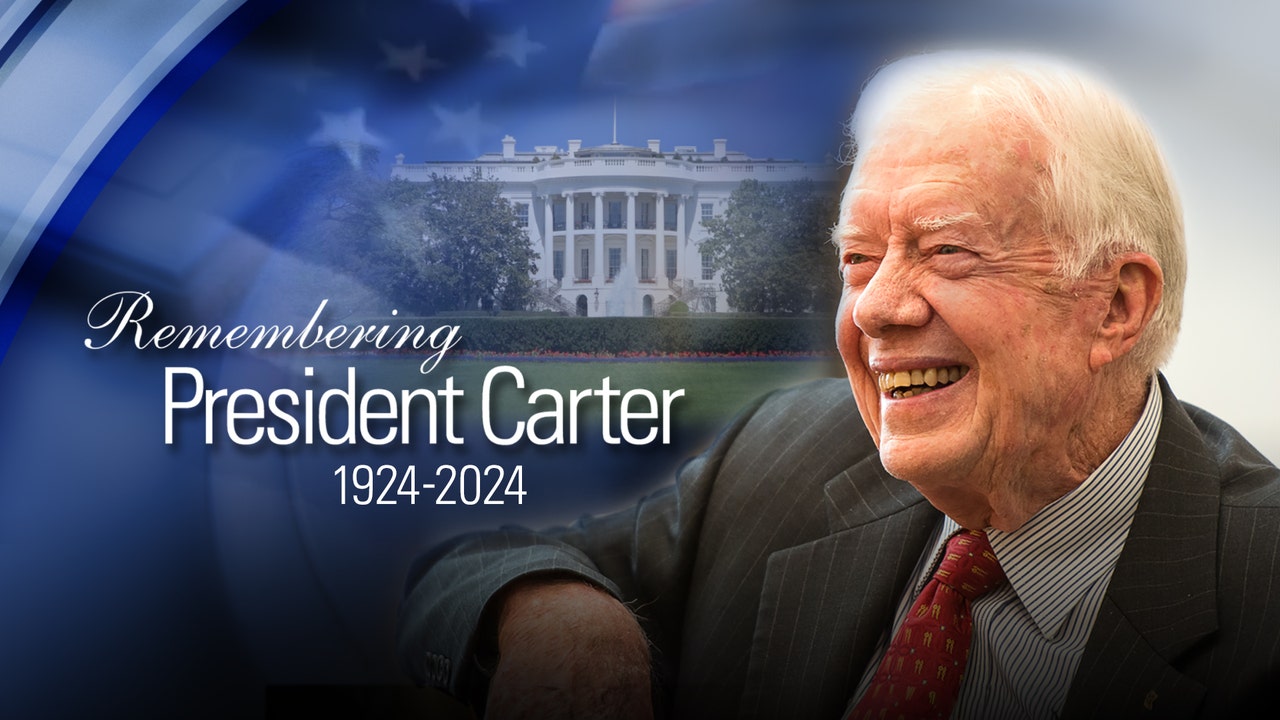



:quality(70)/cloudfront-us-east-1.images.arcpublishing.com/adn/SCURZEYVBRHPXLFDSUAX3RULQ4.JPG)






